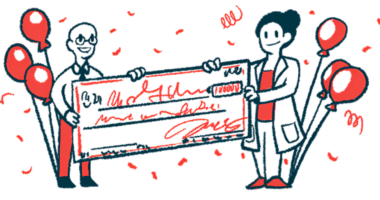Thrashing and Gnashing: Managing Parkinson’s Bedtime Challenges

Over the years, I have visited with many neurologists across multiple states regarding my Parkinson’s disease (PD). In their clinical interviews, they ask if I’m thrashing in my sleep. Then, they ask Mrs. Dr. C.
It seems that thrashing in one’s sleep an important diagnostic symptom for Parkinson’s. In a study published earlier this year in Neuroepidemiology, Danish researchers found that a diagnosis of idiopathic rapid eye movement (REM) sleep behavior disorder is associated with an increased development of neurodegenerative diseases like Parkinson’s several years before and after a diagnosis is made.
A Norwegian study published in BMC Neurology noted that, “It has been recommended that assessment of PD should also include a disease-specific instrument for measurement of sleep disturbances. … Generic sleep assessment scales do not systematically address and quantify the most common sleep problems in PD patients. As such, [the Parkinson’s Disease Sleep Scale] can provide an indication for treatment of the sleep problems commonly accompanying PD.”
Aside from the clinical issues of sleep disorders in PD, the concept of REM sleep behavior disorder as an early sign of neurodegenerative disease may be of interest for future research on biomarkers and treatment strategies, particularly for PD.
Everyone tosses and turns in their sleep. We all have nights when our sleep is interrupted restlessness. But PD thrashing is not the typical “trying to get comfortable” nocturnal stirrings the doctors inquire about. They seek clinical evidence of physically acting out dreams while still asleep — perceived by an observer as thrashing.
I couldn’t tell if I was physically acting out my dreams while asleep. I wanted to know if I was. In the early years, both Mrs. Dr. C and I initially answered, “No, haven’t seen anything odd.” Years later, I would write about a sleepwalking event. I wouldn’t have known it occurred, except that I had fallen asleep in the guest room and woke up in the master bedroom.
Mrs. Dr. C is a very heavy sleeper, so she’s not much help in identifying my PD perambulations or thrashing events. But she would comment on my constant in-and-out-of-bed activity before getting to sleep. I identified that as akathisia. Thrashing and gnashing have decidedly distinct qualities. For starters, I’m asleep when it occurs.
I needed some way to monitor this activity.
We decided to sleep in separate beds. Then, on my queen-size bed, large couch upholstery pillows were placed on the side where my partner used to sleep. Because they were large, on top of the covers, and spanned the full length of the bed, they were stable enough to not easily slip off. Now, I had a thrashing recording device.
Some mornings, the pillows would be scattered around the bed and on the floor. Other mornings, they would be as neat as when first placed on top of the covers. I also noticed that I was grinding my teeth on those thrashing nights. I had jaw pain and intense muscle spasms in my arms and legs in the morning after a night spent thrashing. A definite increase in pain follows a thrashing and gnashing night. These are my worst nights, and they’re always followed by a bad day.
These episodic symptoms can feed into a cycle of insomnia. I’m acutely aware that the “flicker effect” of thrashing can lead to nights without sleep. Although I’m asleep when the thrashing occurs, the fallout from these nights is that I may be wide awake through another night or two while my PD brain seeks homeostasis for the wake-sleep cycle.
It isn’t that I’m tired due to lack of sleep. I am experiencing the deep fatigue of PD — what I call draining the well of energy resources.
Thrashing and gnashing nights fit my conceptual model of the flicker effect. These nights don’t happen all the time, and their intensity varies. Then, when the night has passed and the early morning sun starts to rise, the well is depleted without time for me to replenish it.
The focus of my PD self-management is to decrease the number of ugly days and thrashing nights, and increase the number of good days. There are things I can do to decrease the thrashing, gnashing, and crashing. I can try for a better sleep routine, when I follow the correct steps. I don’t always do it, and sometimes PD symptoms override my best attempts, but I am making progress.
Using the flicker effect as biofeedback is just one example of my self-management tools. I use the pillow technique to determine if I’m not sleeping well, record my symptoms, and then use homeostasis balance tools, exercise, and brain rewiring strategies to compensate for the disturbed slumber, exhaustion, and the increase in PD symptoms.
The next time the neurologist asks, “Are you thrashing at night?” I can more definitely say, “Sometimes.”
***
Note: Parkinson’s News Today is strictly a news and information website about the disease. It does not provide medical advice, diagnosis or treatment. This content is not intended to be a substitute for professional medical advice, diagnosis, or treatment. Always seek the advice of your physician or another qualified health provider with any questions you may have regarding a medical condition. Never disregard professional medical advice or delay in seeking it because of something you have read on this website. The opinions expressed in this column are not those of Parkinson’s News Today or its parent company, Bionews, and are intended to spark discussion about issues pertaining to Parkinson’s disease.








Kim Harris
I just wanted to say Thank You. My husband has recently been diagnosed with PD. I am finding these daily updates both helpful and reassuring.
Jo Mitchell
My partner takes CBD before bed, and it has cut down his night terrors by 90%, and no more violent dreams. He takes the strongest we can buy. I no longer get woken up several times a night with a fist in my back. I can feel when one is coming on and hold his hand to calm him. Before CBD he was really animated with both legs and arms, and of course he had no knowledge of what happened…except he woke exhausted from the dreams.
Cindee Battin
I found this article very informative and helpful in understanding my father. I am his caregiver.
Mary Evslin
I was diagnosed with REM sleep disorder 4 years ago. I often talk or yell in my sleep and used to hit and once tried to bite my husband while asleep. He has learned not to roll over to console and hug me because I think he is the bad guy chasing me and hit him. He is now a defensive sleeper and just pats me from his side of the bed.
I had been taking Clonazepam for 4 years. It works most of the time. I just decided to try 10 mg of Melatonin before bed instead of the Clonazepam which is addictive. I do not get go to sleep immediately but have not been hitting him or yelling a lot so I will stay on it until/or if, I start hitting him again.